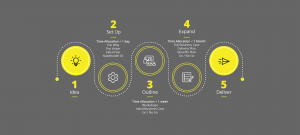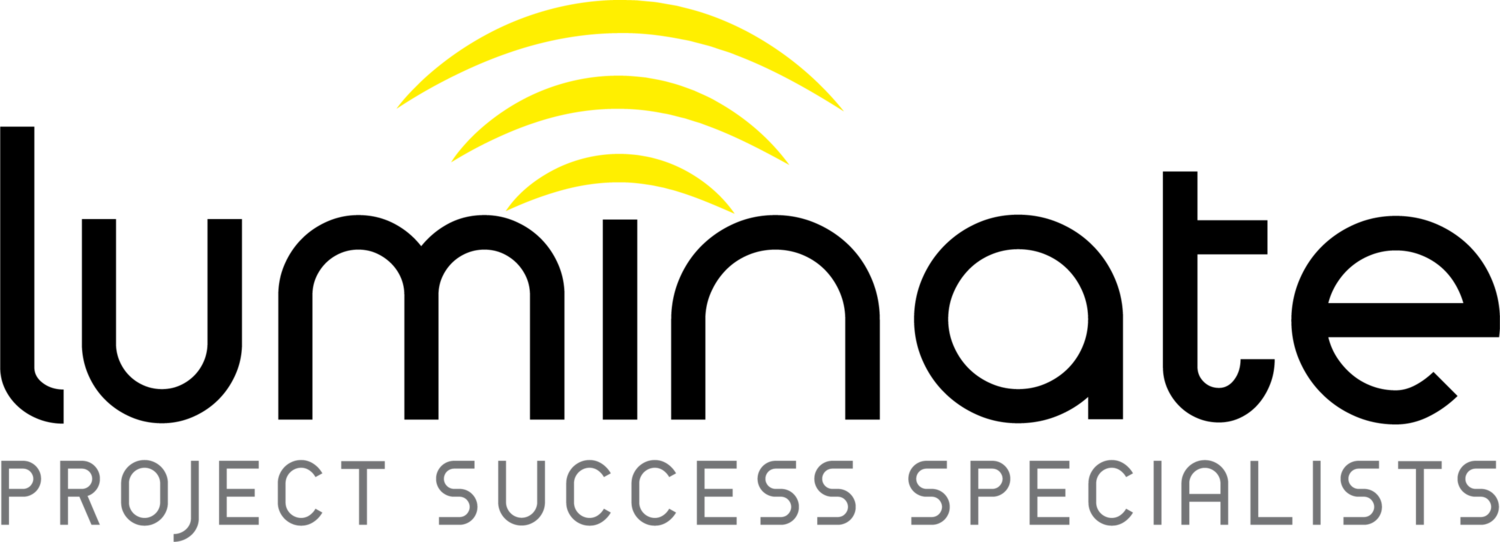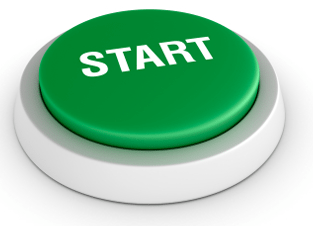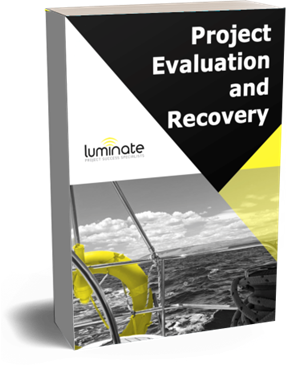So you have a valid business idea you are keen to run with. And you want to initiate a project to deliver this? You don’t want this to take an age but you need to get it right. At Luminate we work through a three step agile process to get your project up and running quickly while making sure it is set up for success.

Set Up
We start with a quick meeting to set up the Initiate phase. The meeting is with the Project Sponsor, is short – an hour or two at the most – to the point and aiming for a couple of key outcomes. (By the way if the Sponsor isn’t 100% clear and on board then you’re not going anywhere until they are).
Firstly, what is the Big Hairy Audacious Goal – BHAG- the project is going to nail? As in a Project Mission Statement but something with teeth. We need this clear up front so it can be used as a touch stone for the project team to refer back to as the project is initiated into delivery mode. If we can’t define this now that’s a clear lead indicator of project stress and very often project failure.
Secondly who do we need on our side to get this thing done? Identify the key stakeholders who need to be engaged NOW to help initiate the project. We’re not looking for everyone with a vague interest, we need decision makers and influencers. Start with a simple question… who are the people that could cause the project to falter if they aren’t on board? These are the critical stakeholders we need for the next step.
Outline
As quickly as possible we then get these critical stakeholders into workshops to agree on an initial business case . There will no more than 3 workshops and we are aiming to get through this fast so half-day or ideally full-day workshops are the aim. These stakeholders might push back, in fact at least some of them probably will as everyone is busy and we are asking for a good chunk of their time… but we help the Sponsor convince them of the need for their attendance.
The aim is to get the people we need in a room to quickly agree the fundamentals of the project. We need every genuinely critical stakeholder in the room or we will very quickly revert back to drawn out document circulation, and the dangers of offline decision making. Alternate representatives are ok provided they pass the golden rule – can they make decisions in the workshop on behalf of who they are representing? If they can’t then we need to get someone there who can.
Into the workshops, we first agree clear rules to ensure that everyone is there with the right purpose – to make decisions and it’s ‘speak now or forever hold your peace’.
The primary outcome we’re looking for from the workshops is a ‘Go / Go No’ decision. With the right people in the room we can quickly understand whether a viable plan and business case is in play and if not we can stop wasting people’s precious time and kick the project back for further assessment or the bin. To do this we work through the following fundamentals using ultra high-tech tools such as whiteboards and post-it notes.
- What does success look like for the project and how do we measure that?
- What are the project’s scope, objectives and outcomes?
- Who do we need to work with to get this done? – both stakeholders and other initiatives? What are the quality expectations of the stakeholders?
- What are the key risks of the project and how will they be managed?
- How will the project communicate with stakeholders and what change management activities are needed?
- What are the project’s tangible and non-tangible benefits? How will those benefits be delivered?
- What are the specific tasks that need to be completed? What is our best estimate of how long these tasks will take and what they will cost?
- Given the above… do we have a valid business case?
This fast, workshop based approach avoids the more traditional play of a Project Manager working around stakeholders in a fractured, drawn out process that takes many weeks just to get to that initial decision point. Agendas and office politics play out very easily in the traditional offline approach to project decision making. Using our peer workshop approach makes it much more difficult for people to curtail the progress of good initiatives or, worse, to promote the progress of bad ideas.
Assuming a ‘Go’ decision is made, the other outcome we want is a set of engaged stakeholders buying in to the project, believing from the outset that it’s a viable initiative and keen to be a part of it’s successful delivery. This is a natural by-product of the workshop approach. Our critical stakeholders work through the fundamentals listed above, have the opportunity for challenge as we go and don’t leave the room unless there is clear agreement that this initiative is the right thing to do and realistically achievable.

Expand
At this point we will have a good outline business case but we also would have identified areas that need some more substantial investigation or that needed to be added to the ‘parking lot’ during the workshops. Often there are PMO or similar processes to complete to get to formal agreement and budget allocation. We need to expand that outline business case – again as quickly as is feasible so we can get on with delivering business value.
Through the Outline workshops we will have planned out the ‘who, how and when’ of expanding the initial case to a complete set of Initiate deliverables. The key point to consider here is ‘fit for purpose’, we want to flesh out the deliverables from the Outline workshops but keep them as lightweight as they can be while meeting the needs of a successful project. And we want the right people – those stakeholders again – to be responsible for helping pulling it all together so we maintain engagement.
Again this should not be a PM beavering away in isolation to get this done, getting dragged in to multiple go-rounds of ‘document review hell’. At Luminate we challenge the time it takes to get this done. Fit for purpose, clear Initiate deliverables should take a few days to a few weeks to get together. None of the 2-3 months of bureaucratic nonsense we see too often.
We then take everyone through a quick review of the first ‘Go / No Go’ decision to check nothing has changed significantly from the Outline stage… If we are a ‘Go’ then we’ve got a solid plan, an engaged group of stakeholders and a keen project team ready to roll. It’s time to Deliver.



